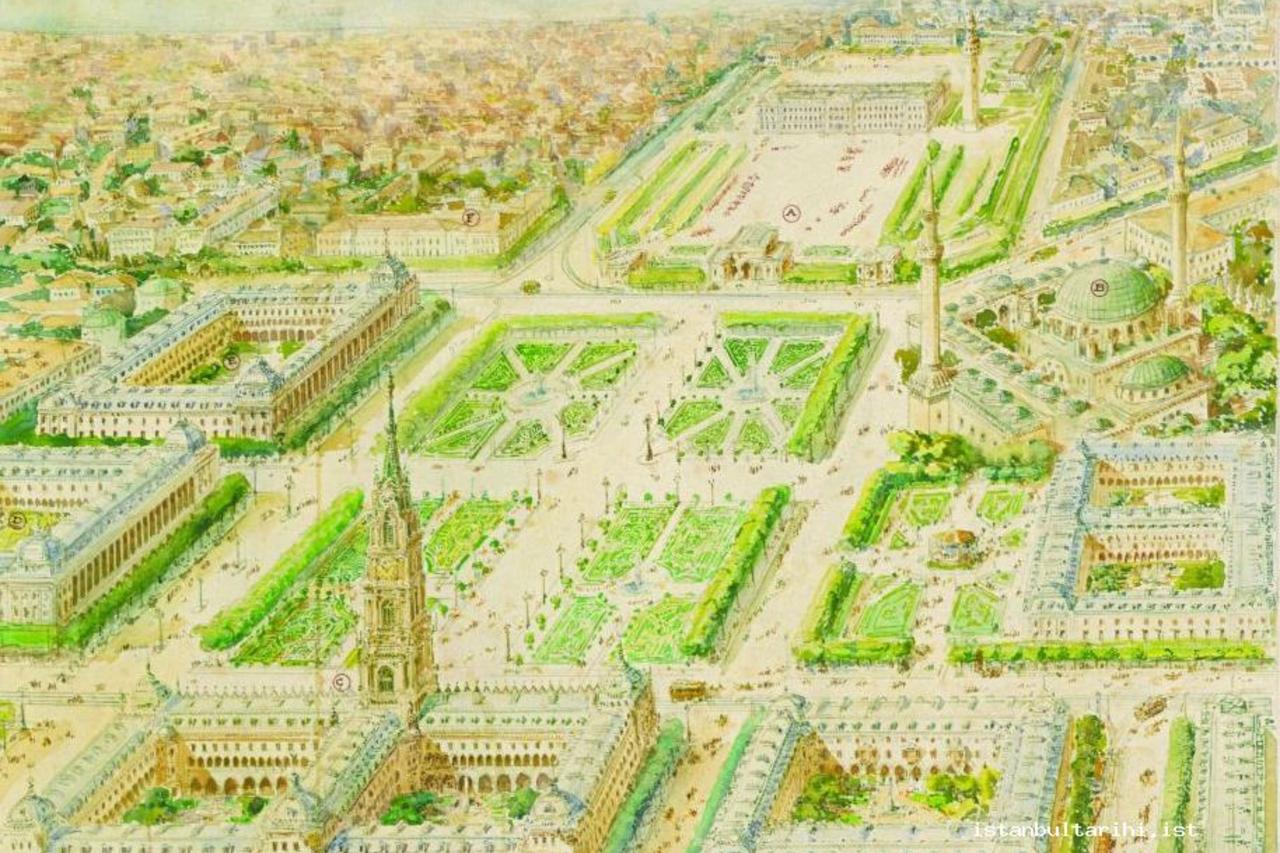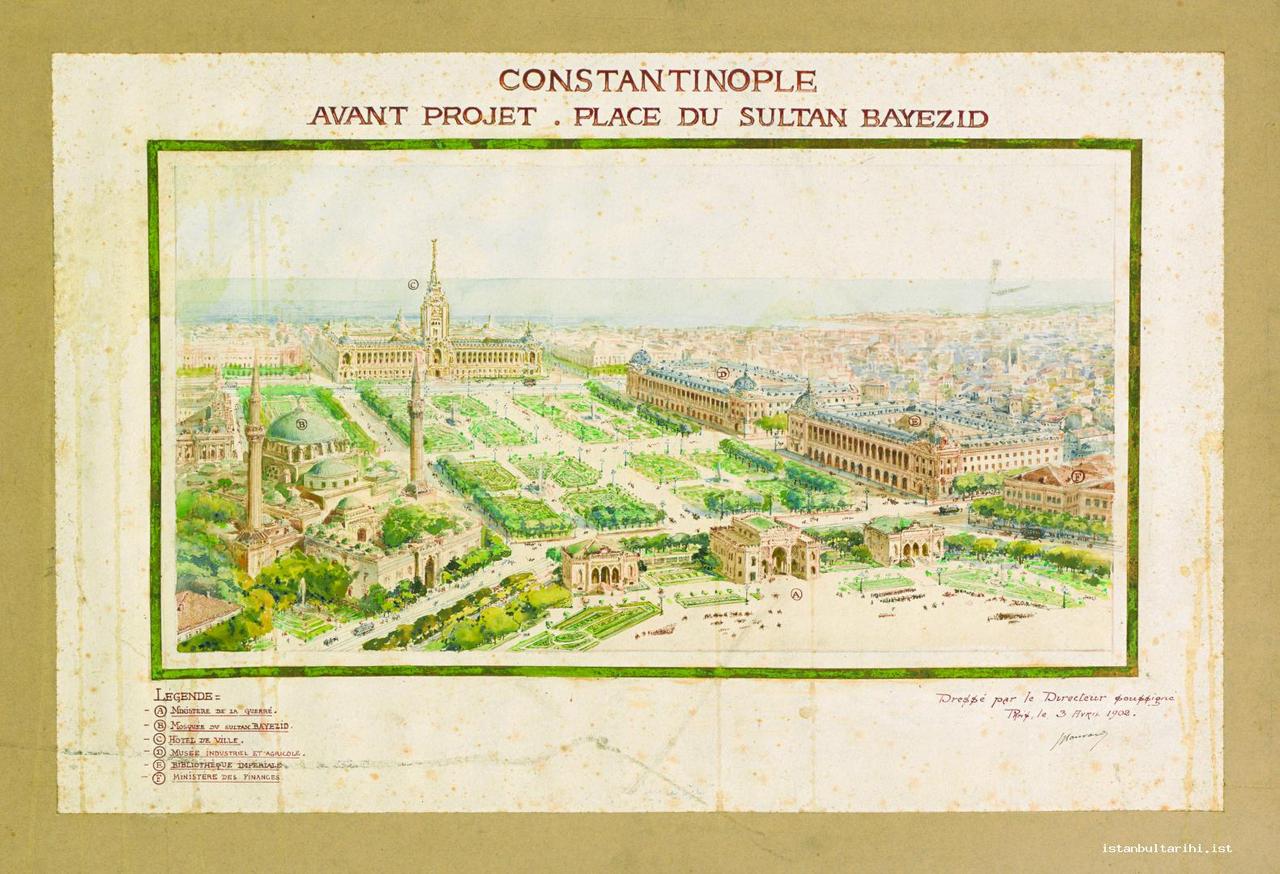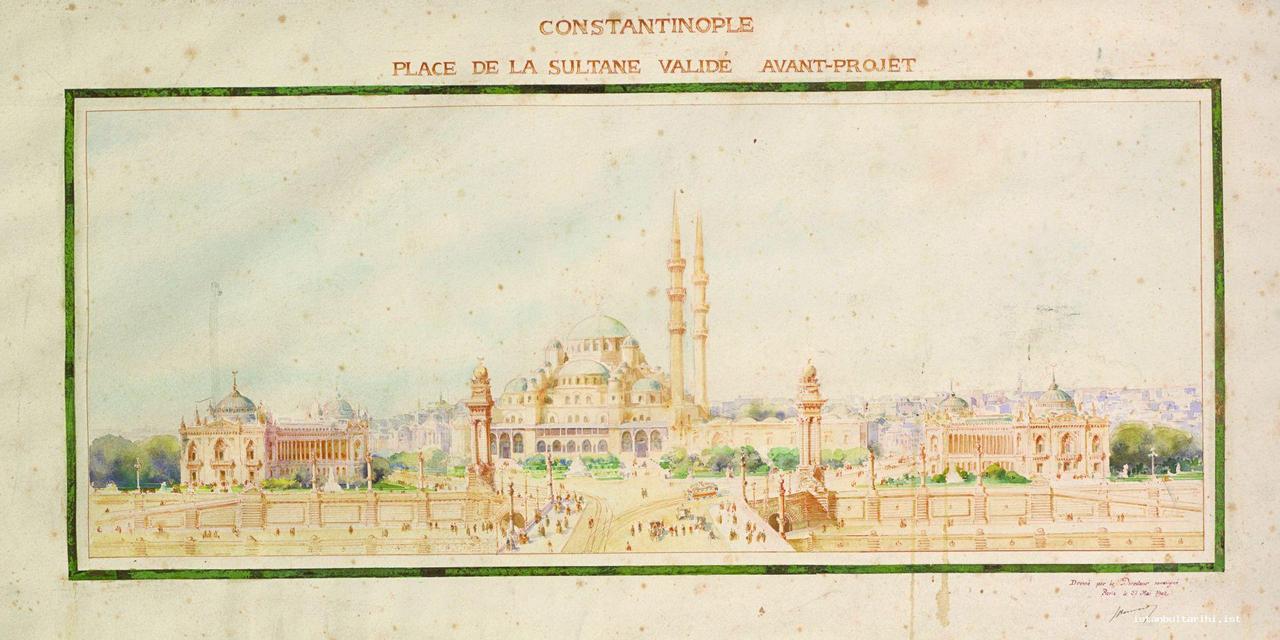
At the dawn of the 20th century, Istanbul was a city where tradition and modernity intertwined, shaping its streets and skyline. Minarets and domes of the Ottoman past towered over narrow, winding streets, while the growing influence of Europe brought new ideas, technologies, and urban visions.
Sultan Abdulhamid II, ruling an empire grappling with internal and external pressures, envisioned Istanbul as a modern metropolis, a capital worthy of standing alongside Paris, London and Vienna. To achieve this ambitious transformation, he commissioned French architect Joseph-Antoine Bouvard to conceive a grand urban plan for the historic peninsula, the heart of the city.
Bouvard’s vision was audacious: wide boulevards slicing through centuries-old neighborhoods, expansive public squares where people could gather and march, and monumental structures that would signal Istanbul’s newfound prominence on the global stage.
Bouvard arrived in Istanbul in 1902 as a well-known figure in European urban planning. He was deeply influenced by the Beaux-Arts school, which emphasized symmetry, grandeur, and monumental architecture. His plan for Istanbul extended these principles into a city that had never before seen such ambition.
One of the cornerstones of his vision was Beyazit Square. Bouvard imagined it as the civic heart of the city. His plans included a towering municipal building, designed to dominate the skyline and symbolically assert the authority and modernity of the Ottoman state.
In addition, he proposed twin buildings to house a National Library and an Industrial and Agricultural Museum, turning Beyazit into a hub of knowledge, culture, and public life.

Beyond Beyazit, Bouvard’s proposals included a network of wide boulevards cutting through the dense, maze-like streets of Istanbul’s historic districts. These avenues were meant not only to improve circulation and connectivity but also to create a sense of order and elegance reminiscent of Paris. Monumental public squares punctuated the urban fabric, providing spaces for civic ceremonies, military parades, and social gatherings.
Bouvard’s vision extended to architecture as well. His plan featured grand civic buildings, designed to project power and sophistication, blending Western styles with Ottoman elements. It was an attempt to reconcile Istanbul’s layered history with the pressures and aesthetics of modernity.

Despite its elegance, Bouvard’s vision for Istanbul collided head-on with the realities of the city. Financial constraints were a major barrier: the Ottoman treasury was already stretched thin by years of military campaigns, administrative costs, and economic stagnation, leaving little room to fund a project of such magnitude. The plan required extensive demolitions, new constructions, and infrastructure upgrades, making it prohibitively expensive.
Istanbul’s unique topography presented another challenge. The city’s seven hills and irregular terrain made straight boulevards and expansive public squares difficult to implement. Narrow alleys, steep inclines, and the constant flow of pedestrians and animals meant that reshaping the landscape on the scale Bouvard envisioned would have been a monumental task.
Political realities added yet another layer of difficulty. Sultan Abdulhamid II’s reign, while strong, was cautious and marked by intense scrutiny. Large-scale urban projects competed with pressing concerns about political unrest, foreign pressures, and administrative control, leaving little room for ambitious citywide reforms.